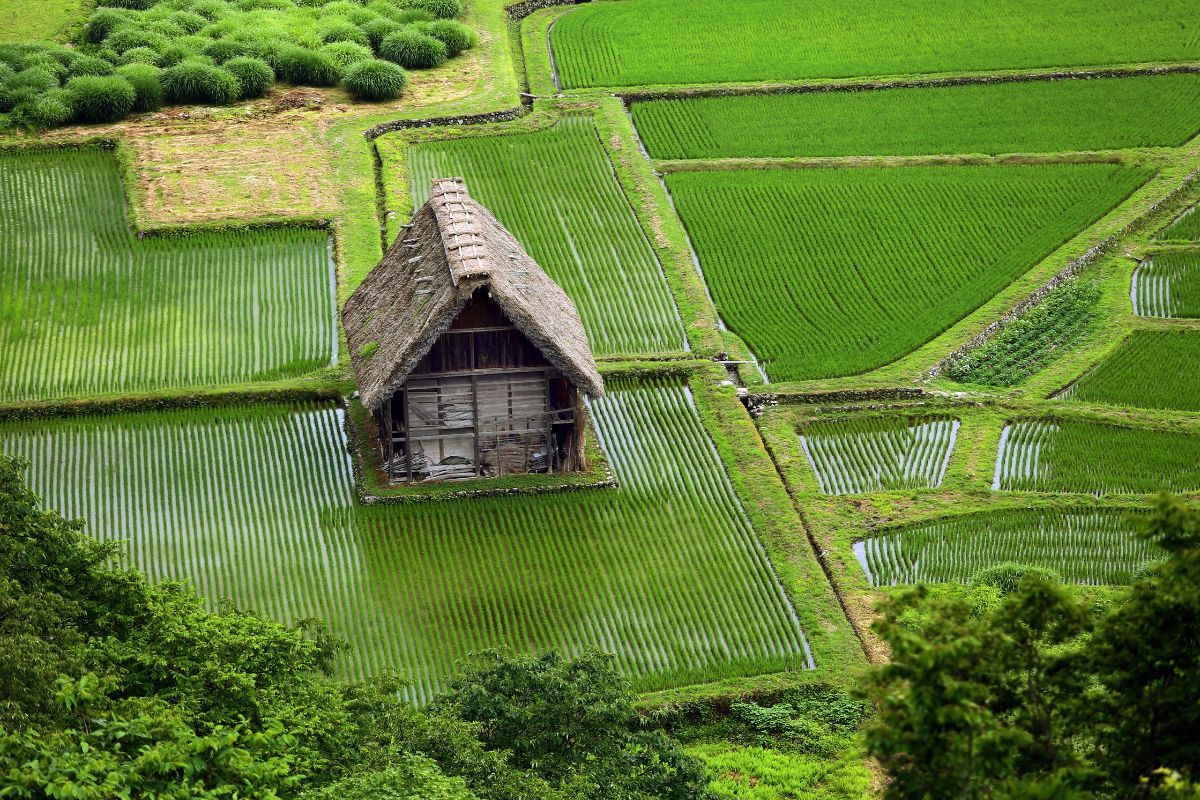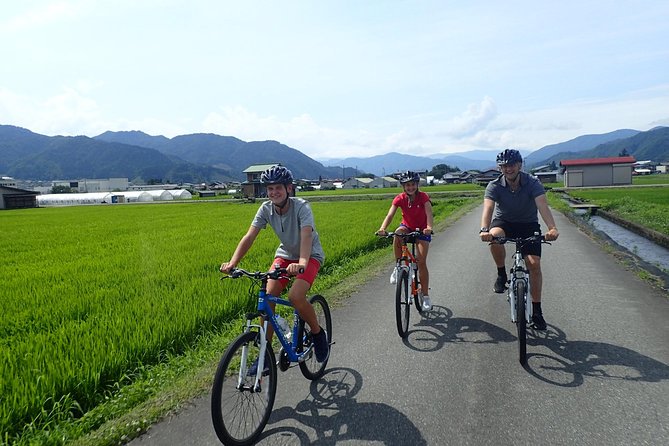Stepping into the village of Shirakawa-go is akin to stepping back in time. Nestled in the remote mountains of Gifu Prefecture, Japan, this rustic village beckons travelers with its charming landscape and unique Gassho-style architecture.
Its fairy-tale allure, untouched by the rapid modernization of the world outside, has rightfully earned it a spot as a UNESCO World Heritage site.

Shirakawa-go’s cultural richness, quaint beauty, and historical significance make it a must-visit for anyone seeking to explore Japan beyond its bustling cities. If you’re yearning for the authentic Japanese rural experience, look no further. This comprehensive guide aims to equip you with all the knowledge you need to plan a memorable trip to this timeless gem.
Why Visit Shirakawa-Go
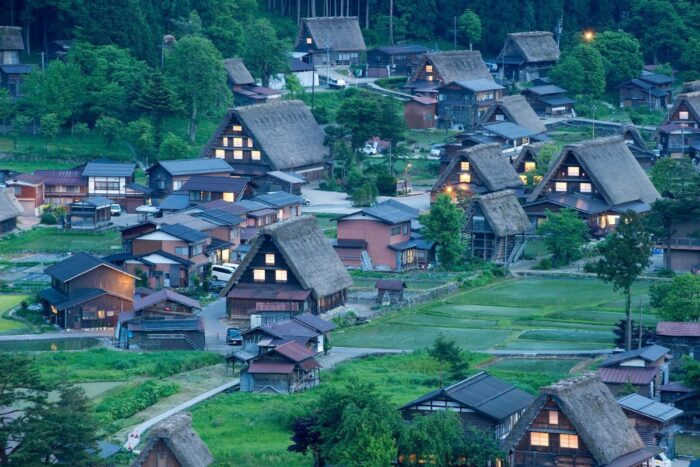
Shirakawa-go isn’t just a destination; it’s an experience. With its traditional Gassho-style houses, picturesque scenery, and warm, inviting locals, the village offers a peek into a way of life that has stood still amid the passing centuries.
The Gassho-style houses, with their steep thatched roofs resembling hands in prayer, stand as living testimonials to a unique architectural style adapted to the harsh winters of the region. These structures, some of which are over 250 years old, transport you back to Japan’s bygone eras.
A trip to Shirakawa-go offers not only a break from urban life but also a meaningful immersion into a culture and history often overlooked by typical tourist itineraries. Here, you can step away from the fast-paced life and explore Japan at a pace that respects the timeless rhythm of nature and humanity.
When to Visit Shirakawa-Go
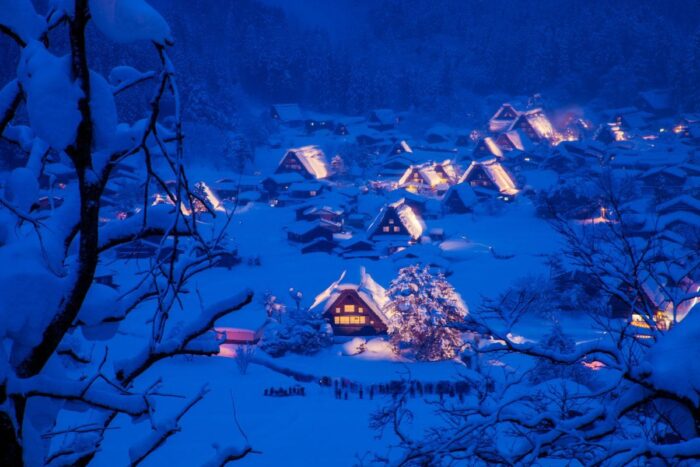
The appeal of Shirakawa-go changes with the seasons, offering a unique charm all year round. The village dazzles under the winter snow, with its thatched-roof houses appearing like intricate snow sculptures under the soft, warm glow of lights. This is the time when the village’s annual illumination event takes place, attracting photographers and travelers from around the world.
Come spring, the snow melts away to reveal a lush green landscape, with cherry blossoms adding a blush of pink. Summer brings with it a vibrant green hue as the rice fields come to life. In autumn, the village basks in the glow of fall foliage, presenting yet another mesmerizing sight.
While each season brings its charm, the quiet beauty of winter snow and the riot of colors in fall make these periods particularly appealing for a visit.
What to Do in Shirakawa-Go
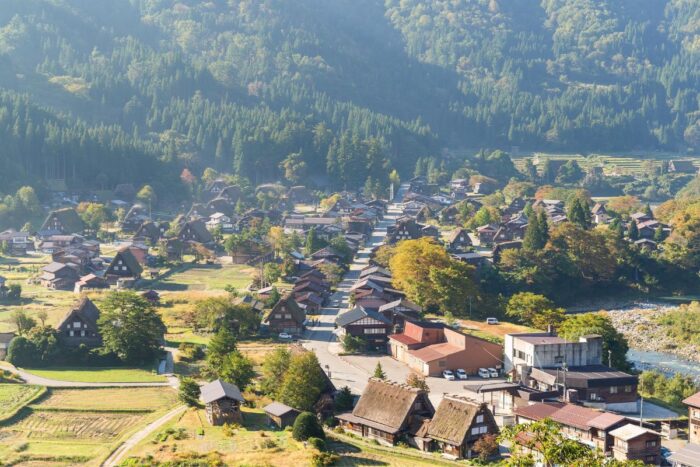
Once you’re in Shirakawa-go, the real adventure begins. Below are some must-see and do’s in the village:
Explore the Gassho-style Houses: No visit to Shirakawa-go is complete without exploring the iconic Gassho-style houses. Some of the most famous ones are the Wada House and Nagase House, offering insights into the local lifestyle and history.
Visit the Shirakawa-go Gassho-zukuri Minkaen: This open-air museum located on the outskirts of the village showcases 25 relocated and preserved Gassho-zukuri houses. It’s an ideal place to learn more about the traditional lifestyle of the region.
Discover the Shiroyama Viewpoint: For a panoramic view of the village and its beautiful surroundings, head to the Shiroyama Viewpoint. It’s a paradise for photographers, especially during the winter illumination event and the autumn color season.
Experience local cuisine: Enjoy a meal at one of the local restaurants serving regional specialties. Don’t miss the Hoba Miso, a dish where vegetables and miso paste are grilled on a magnolia leaf.
Participate in local traditions and seasonal events: If you time your visit right, you can participate in local festivals like the Doburoku Festival, where the village’s unique sake is shared among the locals and visitors. The winter light-up event is another spectacular experience, where the snow-covered village is illuminated to create a magical landscape.
Where to Stay in Shirakawa-Go
To make the most out of your Shirakawa-go experience, consider spending a night in the village. A variety of traditional Gassho-style guesthouses, known as minshuku, offer overnight stays.
Staying in a minshuku lets you experience the village’s charm after the day-trippers have left and the quiet of the night takes over. It’s an immersive experience where you can enjoy local hospitality, taste home-cooked meals, and even help out with some farm tasks, depending on the season.
The guesthouses can get booked up quickly, especially during popular times like the winter illumination event, so it’s recommended to book well in advance. It’s important to note that most guesthouses do not accept credit cards and require cash payments.
Getting to Shirakawa-Go
Shirakawa-go is well connected to some of Japan’s major cities. Here is a detailed breakdown of how to reach this beautiful village from Takayama, Kanazawa, Tokyo, and Toyama.
From Takayama
Takayama and Shirakawa-go are connected by the Nouhi Bus service. The journey takes about 50 minutes to an hour. Buses depart from Takayama Bus Terminal, which is located right next to JR Takayama Station. It’s a good idea to buy your bus ticket at least a day in advance, especially during peak tourist season.
From Kanazawa
Kanazawa is another city with direct bus connections to Shirakawa-go, provided by the Hokutetsu Bus service. The journey takes approximately 75 minutes. Buses leave from the East Gate of Kanazawa Station. Similar to Takayama, you are advised to buy your tickets a day in advance, especially during peak seasons.
From Tokyo
To get to Shirakawa-go from Tokyo, you have a few options:
- Train to Toyama then bus to Shirakawa-go: Take the Hokuriku Shinkansen from Tokyo to Toyama, which takes about 2 to 2.5 hours. From Toyama Station, head to the bus terminal and take a bus to Shirakawa-go. This bus journey takes about 1.5 hours.
- Train to Takayama then bus to Shirakawa-go: Take the Tokaido Shinkansen from Tokyo to Nagoya, then transfer to the Hida Wide View Express for Takayama. This journey takes approximately 4.5 hours in total. From Takayama, you can take the Nouhi Bus to Shirakawa-go, which takes about an hour.
From Toyama
From Toyama, you can take a bus directly to Shirakawa-go. The bus terminal is just outside Toyama Station. Buses are operated by the Kaetsuno Bus company, and the journey takes about 1.5 hours. As with other routes, it’s recommended to purchase your tickets a day in advance during peak seasons.
Remember, whether you’re travelling from Tokyo, Toyama, Takayama, or Kanazawa, the key to a smooth journey to Shirakawa-go is planning ahead and booking your bus tickets in advance. This is especially important during popular seasons such as the winter illumination event or the autumn leaf viewing season when many travelers flock to see the beauty of this historic village.
Day Trips to and from Shirakawa-Go
While Shirakawa-go doesn’t really serve as a base (more of a day trip destination for most) There are some recommended places nearby or places to base yourself for a day trip here.
Gokayama: Just like Shirakawa-go, Gokayama is known for its traditional Gassho-style houses but is less crowded. It’s also a UNESCO World Heritage site and is only a short bus ride away.
Takayama: Known as ‘Little Kyoto’, Takayama offers beautifully preserved streets lined with old merchant houses, sake breweries, and craft shops. It also hosts the famous Takayama Festival twice a year.
Kanazawa: Famous for the beautifully landscaped Kenrokuen Garden, one of Japan’s top three gardens, Kanazawa also offers a thriving contemporary art scene, historic districts, and excellent local cuisine.
Gokayama: The Less Explored Gem near Shirakawa-Go
Gokayama, often overshadowed by its more famous neighbor, Shirakawa-go, is a picturesque historic village that offers a quieter, yet equally captivating experience. Like Shirakawa-go, Gokayama is also a UNESCO World Heritage site, known for its traditional Gassho-style houses. Here’s everything you need to know about this serene village.
Comparing Gokayama with Shirakawa-Go
While both Shirakawa-go and Gokayama share the same traditional Gassho-style architecture, their visitor experiences can be quite different.
Crowd Levels: One of the main differences between the two is the level of tourism. Shirakawa-go tends to be more crowded due to its larger size and popularity, especially during the illumination event in winter and the cherry blossom season in spring. On the other hand, Gokayama, being less known, provides a more tranquil atmosphere, allowing visitors to leisurely explore the village without the throng of crowds.
Preservation: Gokayama is said to have a higher level of preservation and authenticity compared to Shirakawa-go, mainly due to lesser commercialization.
Size & Attractions: Shirakawa-go, being larger, has more attractions such as the open-air museum, multiple observation points, and more Gassho-style houses to explore. Gokayama, though smaller, offers its own charm with its tranquil surroundings, fewer houses, and the opportunity for hands-on experiences such as washi paper making.
Getting to Gokayama
Gokayama can be accessed from both Shirakawa-go and major cities like Kanazawa and Takayama.
From Shirakawa-go: The easiest way to get to Gokayama from Shirakawa-go is by bus. The journey takes approximately 30-40 minutes. The Nouhi Bus operates services between these two villages, and the schedule can be found on their official website.
From Kanazawa: Direct buses run from Kanazawa to Gokayama and take around 1.5 hours. The buses depart from Kanazawa station’s east exit.
From Takayama: From Takayama, you will first need to take a bus to Shirakawa-go (approximately 50 minutes to 1 hour) and then another bus from Shirakawa-go to Gokayama (around 30-40 minutes).
Tips for Traveling in Shirakawa-Go
Respect the local etiquette: Remember that many of the houses in the village are private residences. Respect the locals’ privacy and do not enter any houses unless they are open to the public.
Be prepared for the weather: The village experiences heavy snowfall in winter. Bring suitable clothing and footwear to enjoy your visit comfortably.
Language tips: While some locals speak basic English, knowing a few phrases in Japanese can be handy and is always appreciated.
Bring Cash: Not all shops or accommodations accept credit cards, so it’s wise to bring enough cash for your needs.
The Sum Up
Shirakawa-go is a true gem that offers visitors a unique chance to experience a traditional Japanese village firsthand. From the charm of its Gassho-style houses to the beauty of its changing seasons, the hospitality of its people, and the richness of its history and culture, this village is more than just a destination – it’s a step back in time, a peaceful respite, and an enriching journey all rolled into one.

